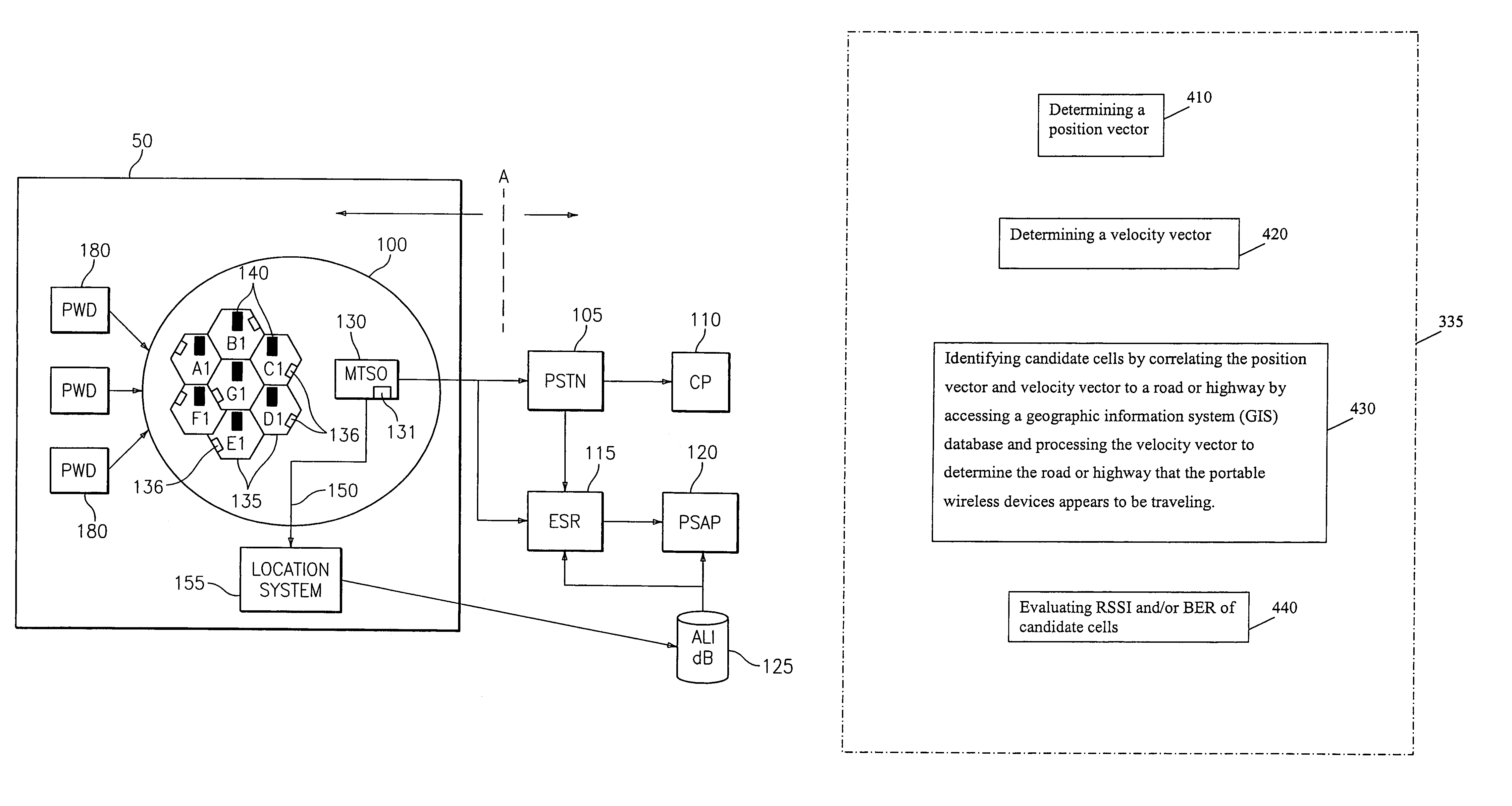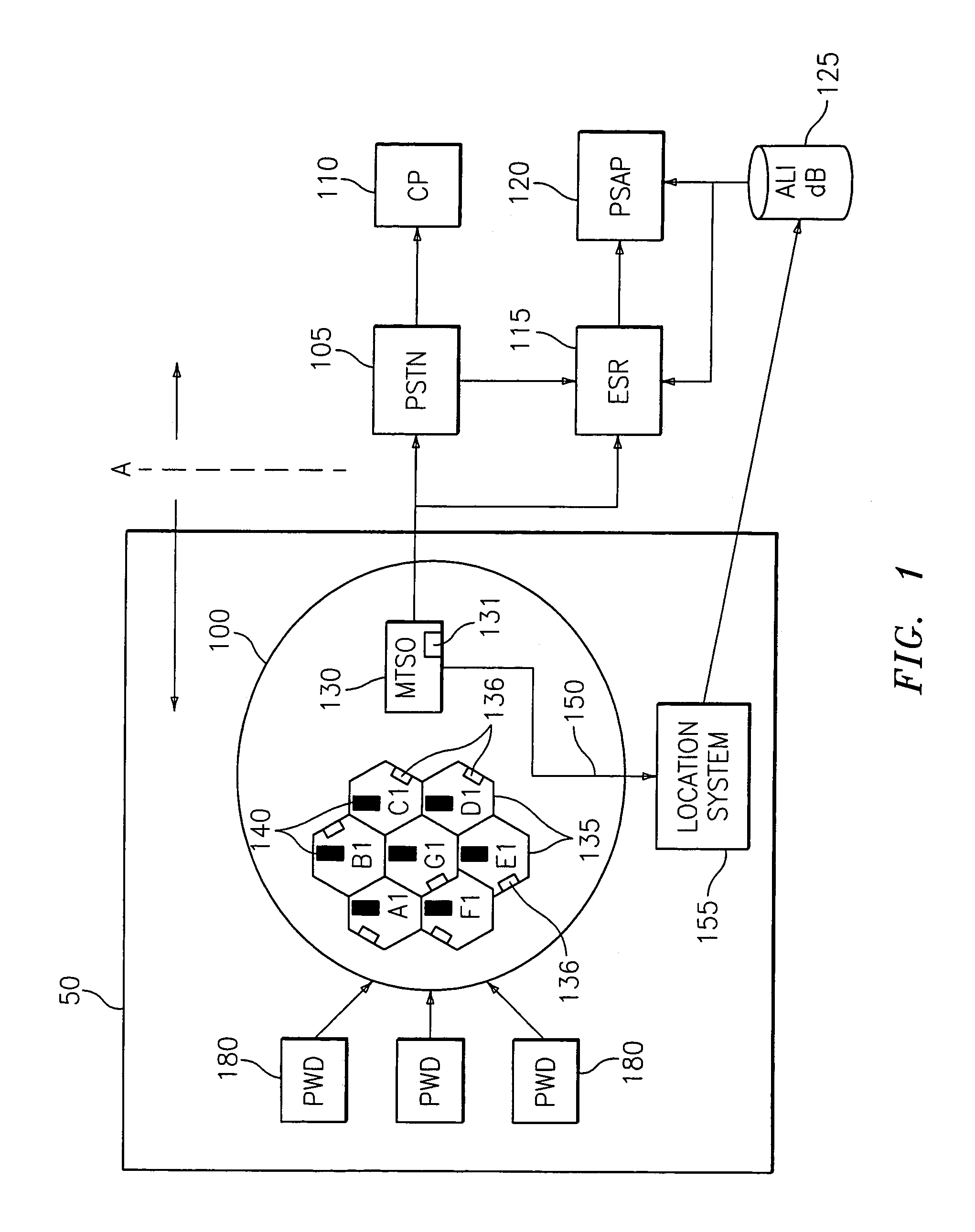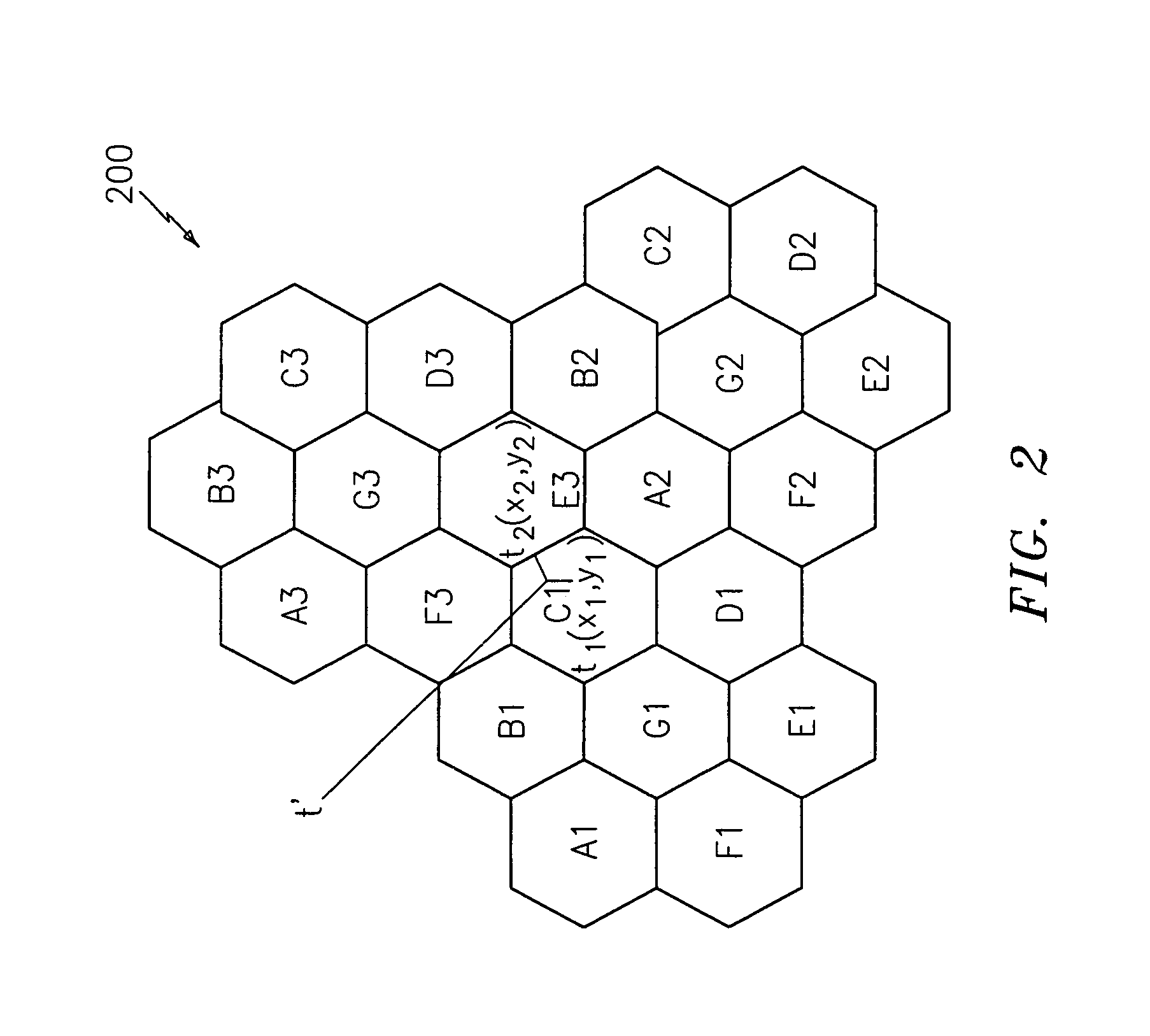Location defined control of cellular system
a technology of cellular system and location, applied in the field of communication technology, can solve the problems of increasing bit error rate and reducing signal strength, and achieve the effects of reducing the frequency and reducing the frequency of handoffs, and increasing the overall system capacity
- Summary
- Abstract
- Description
- Claims
- Application Information
AI Technical Summary
Benefits of technology
Problems solved by technology
Method used
Image
Examples
Embodiment Construction
[0035]FIG. 1 is a block diagram, according to an embodiment of the invention, for a system 50 that uses location information for purposes of management and control of a cellular system. System 50 may be part of a larger system that includes an interface to the emergency services infrastructure of the public switched telephone network. The elements to the left of line A in FIG. 1 relate to a cellular system, while those elements to the right of line A relate to the public switched telephone network, sometimes referred to as the Plain Old Telephone System or “POTS.”
[0036]Portable wireless devices 180 interface with cellular system 100 to place phone calls (or to transmit non-voice data) to other portable wireless devices 180 in cellular system 100 or to devices (e.g., land line telephones) in the public switched telephone network (PSTN). The portable wireless devices 180 could be any two-way device that permits the position of the device to be localized using suitable localization tec...
PUM
 Login to View More
Login to View More Abstract
Description
Claims
Application Information
 Login to View More
Login to View More - R&D
- Intellectual Property
- Life Sciences
- Materials
- Tech Scout
- Unparalleled Data Quality
- Higher Quality Content
- 60% Fewer Hallucinations
Browse by: Latest US Patents, China's latest patents, Technical Efficacy Thesaurus, Application Domain, Technology Topic, Popular Technical Reports.
© 2025 PatSnap. All rights reserved.Legal|Privacy policy|Modern Slavery Act Transparency Statement|Sitemap|About US| Contact US: help@patsnap.com



